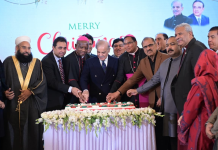Fatima Khalid
Pakistan International Airlines (PIA), once a symbol of national pride and a formidable player in global aviation, has faced a significant decline over the years. Several factors have contributed to the downfall of the airline, including mismanagement, financial instability, political interference, bureaucratic inefficiencies, and increasing competition from private carriers and international airlines. Below is an in-depth analysis of how PIA went from launching Emirates to struggling for buyers. Today, the government is attempting to privatize PIA, but the process is faltering due to a lack of interested buyers. According to The Express Tribune, the government invited bids for PIA’s privatization, but only one party, Blue World City Real Estate Development, emerged as a bidder. Blue World City offered Rs. 10 billion, far below the government’s target price of Rs. 85 billion. Once a trendsetter in global aviation, PIA was leading the industry in innovation and technology. However, over the decades, its accumulated debt has soared to Rs. 830 billion, with losses estimated at Rs. 700 billion. In 1946, Orient Airways was established in Calcutta under the leadership of Mirza Ahmed Ispahani. After the partition of India, M.A. Ispahani relocated the airline to Karachi. The need for domestic and international flights increased due to the geographical distance between East and West Pakistan. Recognizing this, the government decided to establish its own airline. In 1955, it merged with Orient Airways to form PIA, which launched its first international route to London with stops in Cairo and Rome. The golden era of PIA began in 1959 under the leadership of Air Commodore Noor Khan, who implemented transformative reforms that turned PIA into a profitable enterprise. PIA became the first airline in Asia to acquire a Boeing 707B and launched international flights to Dhaka, London, and Karachi in 1960. Soon after, it established a Karachi-to-New York route and introduced helicopter services in East Pakistan, setting industry benchmarks. In 1962, PIA set a world record by completing a London-to-Karachi flight in 6 hours, 43 minutes, and 51 seconds—a record that remains unbroken. Pakistan was also the first country to establish direct air access to China by landing a PIA flight in Beijing. Furthermore, PIA became the world’s first airline to integrate computer technology, using IBM systems in the 1960s.
During Nawaz Sharif’s tenure, the Open Skies policy was introduced, allowing any airline to operate as many flights as they wished to and from Karachi. Inspired by Singapore’s model, the policy was implemented without fully considering Pakistan’s unique economic and geopolitical realities. At the time, Karachi was the only major gateway for international travel from Pakistan, and opening the market to foreign airlines severely impacted PIA’s revenue. According to Irfan Ghani, former Director of Marketing and Corporate Planning at PIA, the airline was unprepared for competition, having previously operated in a monopolistic environment. The government failed to consult PIA before implementing the policy and only sought its input after the decision had been finalized. Although the policy was later withdrawn, agreements with Dubai and Emirates had already been formalized, leading to lasting consequences. During Musharraf’s tenure, a presentation highlighted the negative impact of the liberal aviation policy, prompting efforts to mitigate its effects in 2002-2003. However, by then, PIA’s profitability had already suffered significantly. The airline, once generating Rs.10 billion in annual profits, became a loss-making entity. Another significant factor contributing to PIA’s decline was its aging fleet. The government ceased fleet upgrades due to economic constraints, leading to operational inefficiencies. Currently, PIA operates 32 aircraft, with 16 reportedly grounded. A nation with a population of 240 million now has only 16 operational planes in its national airline comparable to the number of aircraft used in a single Hollywood movie production.
Due to the aging fleet, PIA’s Pilot Union went on strike, refusing to fly outdated aircraft for more than 80 hours, citing safety concerns. Before the establishment of the European Union (EU) in 1993, individual European nations inspected PIA flights independently. When faults were detected, PIA would reroute problematic aircraft to other destinations. However, after the EU’s formation, member states began sharing safety data, revealing widespread issues with PIA’s maintenance and safety standards. As a result, the EU banned PIA from operating within European airspace. Short-term decision-making played a significant role in PIA’s decline. Since 92% of PIA’s shares belong to the government, successive administrations managed the airline for their immediate benefit, without implementing long-term strategies for sustainability. For example, during the Musharraf era, PIA was led by Ahmed Saeed, a businessman and classmate of Musharraf. Saeed secured Rs. 22 billion from the government, stating, “It’s enough to sustain the airline for four years the rest I don’t know.” When he resigned four years later, cash flow issues erupted, further destabilizing the airline. In 2011, a six-week survey conducted by MBA interns at PIA found that passengers avoided PIA for two primary reasons:
- Limited weekly flights.
- The absence of alcohol service on international routes. Unlike PIA, most Muslim-majority airlines, except Iran Air and Saudia, served alcohol to international passengers.
From its inception, PIA resisted outsourcing, operating its own catering services, hospitals, press, horticulture division, maintenance offices, and even a poultry farm. While this insourcing model was necessary in the 1960s due to strained relations with India and a lack of Gulf-based airlines, it eventually became an operational burden. In 2000, the Haji Ibrahim Paracha Group acquired a 40% stake in PIA, marking a turbulent phase in the airline’s history. Haji Ibrahim Paracha’s appointment as Chairman of PIA’s Board of Directors, followed by his son Haji Mohammad Ibrahim’s role as Chief Financial Officer, led to a series of controversial decisions. Over 3,000 new employees were hired, increasing the workforce by 25% a move widely seen as political patronage rather than operational necessity. These hires received salaries significantly above industry standards, further straining PIA’s finances. PIA’s downfall can be attributed to a combination of mismanagement, political interference, financial misjudgment, and resistance to modernization. Once a leader in global aviation, PIA now struggles with mounting debts, operational inefficiencies, and an uncertain future. While privatization may offer a potential solution, the airline’s deep-rooted issues must first be addressed to restore its former glory.
Fatima Khalid












